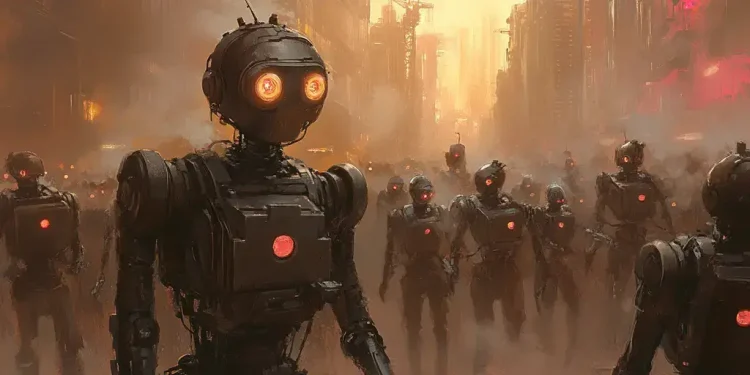Artificial Intelligence (AI) has been a topic of fascination and concern for many people around the world. With its rapid development and integration into various aspects of our lives, it’s only natural for people to wonder about the potential dangers associated with it. One of the big questions is, “Can AI kill humans?” Let’s explore this topic in more detail to understand the possibilities and risks involved.
The Nature of AI
First, it’s important to understand what AI is. At its core, AI refers to computer systems that perform tasks typically requiring human intelligence, such as recognizing speech, making decisions, or even detecting patterns. These systems are designed to assist and augment human capabilities, not replace them.
AI technologies can be broadly categorized into two types: narrow AI and general AI. Narrow AI is designed to perform specific tasks and is the most common form of AI we encounter today. Examples include virtual assistants like Siri or Alexa, and recommendation algorithms used by Netflix or Amazon. On the other hand, general AI refers to AI that possesses the ability to understand, learn, and apply intelligence across a wide variety of domains, similar to a human. However, general AI is mostly theoretical and not something we have achieved yet.
Concerns Around AI and Safety
While AI itself does not possess a desire or intention like humans do, there are concerns about the circumstances under which AI could indirectly cause harm. These concerns are generally about misuse, system errors, or unintended consequences.
- Misuse: AI systems could be used for malicious purposes, such as creating autonomous weapons. These weapons could potentially cause harm if deployed irresponsibly.
- System Errors: AI can make errors or be subject to bugs, leading to unintended outcomes. For example, an AI controlling traffic systems might malfunction and cause accidents.
- Unintended Consequences: When AI systems do not perform as expected, they may lead to unexpected results, like chatbots that spread misinformation.
Safeguards and Regulations
In response to these concerns, there are ongoing efforts globally to ensure AI is developed and implemented safely. Many experts and organizations are working together to create guidelines, ethical standards, and regulations to govern the use of AI technologies.
Governments, tech companies, and international bodies are all playing a role in this effort. These include setting up committees for ethics in AI, creating frameworks for safe AI development, and investing in research to better understand the implications of AI technologies.
The Role of Human Decision-Making
It’s crucial to remember that AI systems are not independent entities. They rely on programming and data input from humans. Therefore, the decision-making process still largely depends on human operators and the ethical frameworks they adhere to.
With appropriate oversight and responsible design practices, AI can be a powerful tool for good, aiding in sectors like healthcare, education, and environmental conservation. Ultimately, the responsibility lies with the people who create and control these technologies to ensure they are used for positive advancements.
Staying Informed and Prepared
For ordinary individuals, staying informed about the latest developments in AI and understanding the basic concepts can empower you to have a more measured view of the risks and benefits. This awareness can help in advocating for responsible AI use and supporting efforts toward transparency and safety in this rapidly evolving field.
In conclusion, while the idea of AI harming humans might sound alarming, the reality is more about ensuring safe practices and ethical use. By maintaining a vigilant approach, we can harness the power of AI for the betterment of society as a whole.










